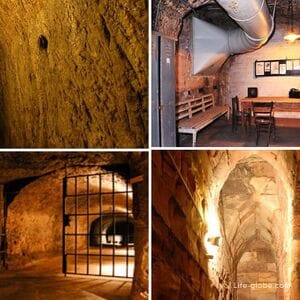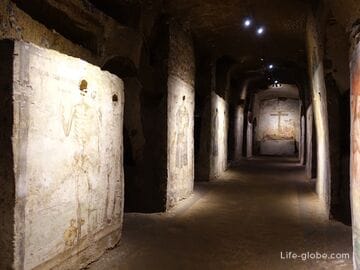In addition to the abundance of terrestrial attractions and museums, there are also some remnants of the medieval "underground city" in Nuremberg, which are located inThe Old City of Nuremberg and some of which can now be visited.
People have been laying tunnels and basements in the rocks of Nuremberg since the 14th century; mainly in the northern part of the Old City of Nuremberg, in the area ofThe Nuremberg Fortress.
The dungeons served as wine cellars, prisons, casemates, bunkers or for the intake of underground water. Some underground rooms were connected by a system of rock tunnels. The system of underground tunnels was kept a special secret until the middle of the 17th century.
During the Second World War, some of the dungeons were expanded and served as a bomb shelter for the inhabitants of Nuremberg.
So, at present, from the dungeons of Nuremberg, you can visit parts of beer cellars, historical rock passages and a medieval prison. They work as museum objects within the framework of excursions.
Prison Museum in the Old Nuremberg Town Hall
In the basements of the Old Nuremberg Town Hall (Altes Rathaus) there is a museum of medieval dungeons (Mittelalterliche Lochgefängnisse), which consists of a historical dungeon prison, the cells of which have been used since the 14th century for interrogations and detention of prisoners before the execution of sentences.
Twelve small cells and a torture chamber provide a visual introduction to the picture of the jurisdiction of the city of the past centuries.
The conditions of the prisoners' detention were appalling: prisoners could spend several days in one of the two-by-two-meter cells, bound and in complete darkness. The equipment in the cells was meager: the floors, ceilings and walls were covered with wooden boards; the facility consisted of a small cot, a bench and a bucket for defecation with a board on it, which also served as a table; in winter there was an additional heater. The prisoners themselves had to pay for food, accommodation and any necessary medical care during their detention in the cells. Beggars were fed at the expense of charity or at the expense of the city.
Some cells were intended for prisoners of a certain type: in cell No. 11 there is a red rooster, a symbol of arson, and in cell No. 12 there is a black cat, which indicates a slanderer.
The torture chamber, called the "chapel", because of its size and, as if mocking the prisoners, gives an idea of how the accused were tortured and interrogated at that time.
A famous prisoner of this prison was the German sculptor Faith Stoss.
Address of the Old Nuremberg Town Hall: Rathausplatz, 2.
Website of the prison museum: lochgefaengnisse. More about the Nuremberg Town Hall...
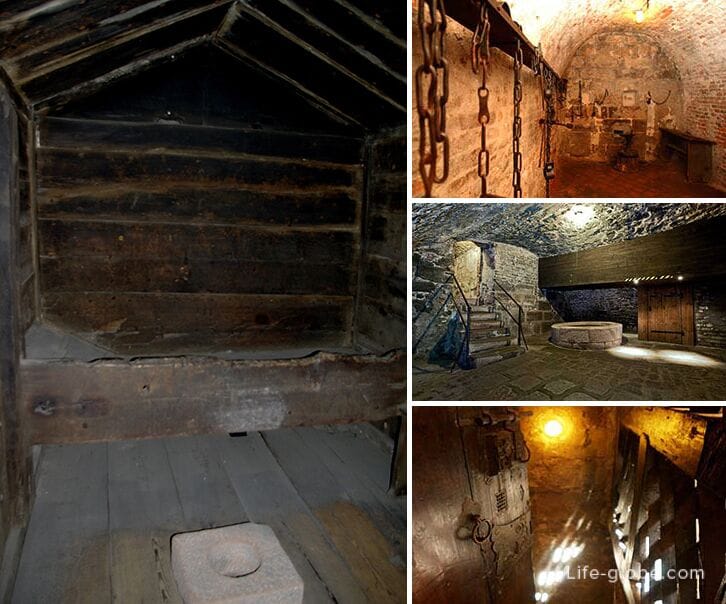
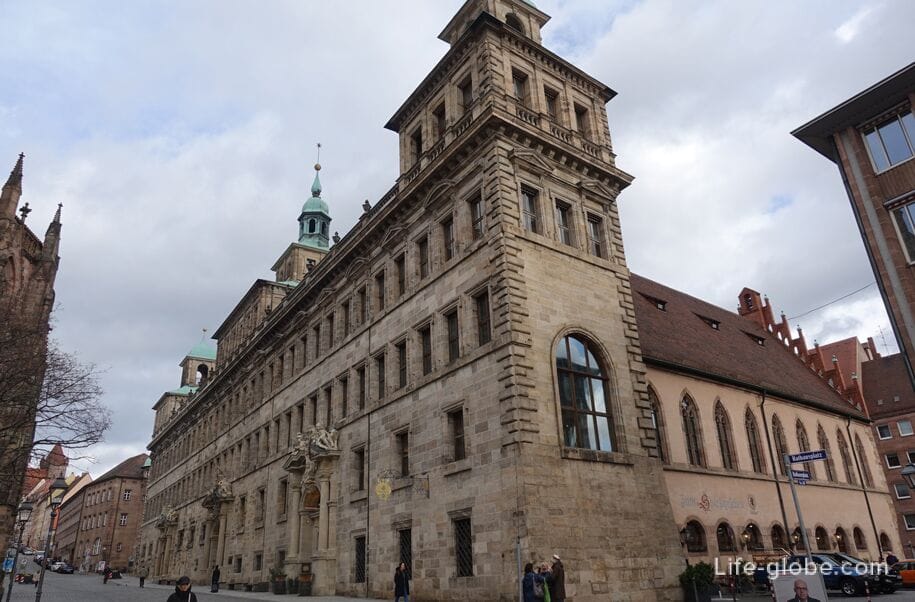
Museum "Bunker of Historical Art"
The entrance to the museum "Bunker of Historical Art" (Historischer Kunstbunker / historical Kuntsbunker) is through an unremarkable building. However, the museum itself is located in a rock under the Nuremberg Castle - a former beer cellar, in which, at a depth of up to 24 meters, during the Second World War, Allied troops discovered a Nazi bunker-cache with art objects and valuables taken from the occupied territories.
The museum offers guided tours of the Nuremberg dungeons.
Museum address: Obere Schmiedgasse, 52.
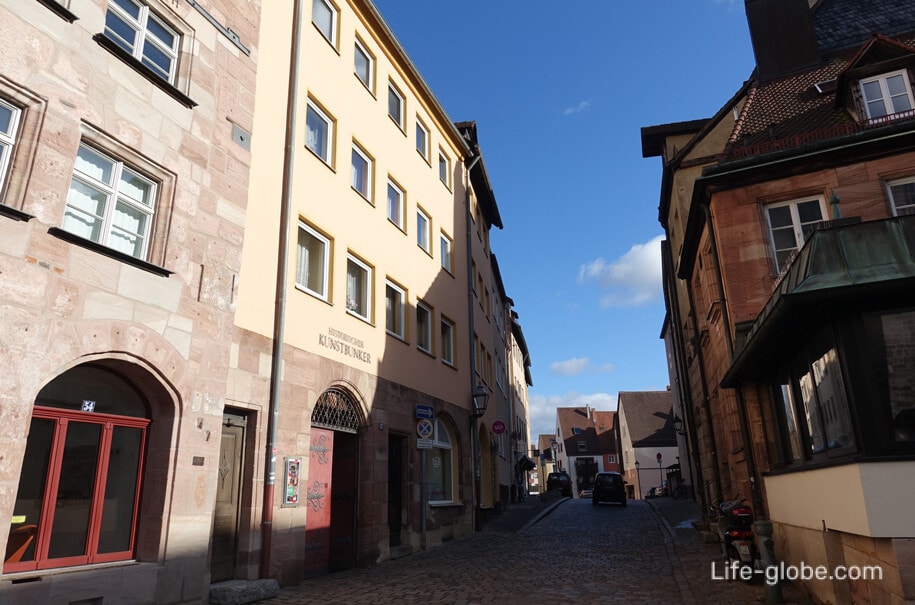
Rock crossings of Nuremberg
In addition to the bunker of historical art, other excursions to the dungeons (casemates) are held in the old city of Nuremberg.
In the Middle Ages, passages and rooms were laid under the Nuremberg fortress, bastions and defensive city wall (since 1545) - the so-called casemates (Kasematten) and rock passages (Felsengänge).
During the history of the casemates were used for various purposes: as hidden passages, emergency exits, a secret system of water pipes, beer cellars (warehouses for beer) and even as a prison.
Today there are guided tours of the casemates.
Website: felsengaenge-nuernberg. The site contains information, including about excursions to the historical bunker.
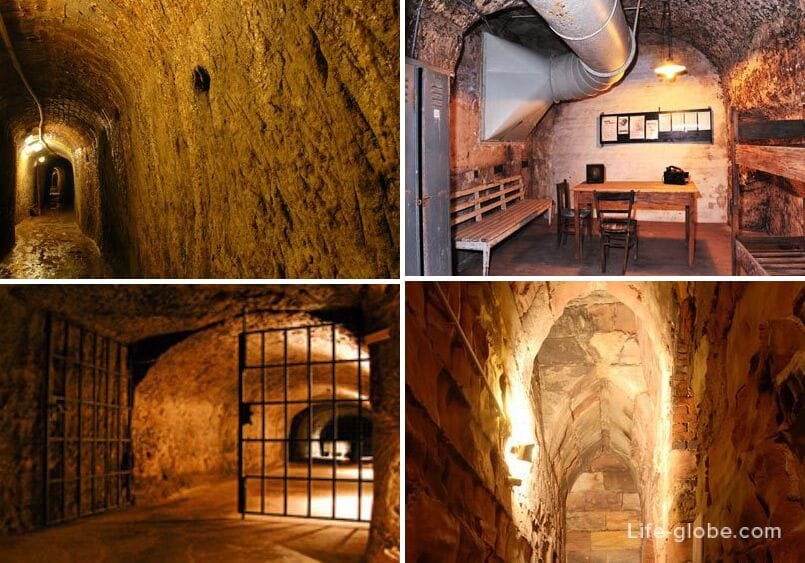
The crypt in the church
In the church of St. Elizabeth (St. Elisabeth Church / St. Elisaber) or Elisabethkirche (Elisabethkirche) there is a crypt located under the entrance and into which a staircase leads.
Initially, the crypt was a basement.
The crypt is entirely made of reddish sandstone and has a barrel-vaulted ceiling.
Entrance to the crypt is free (free).
Church address: Jakobsplatz, 7-7a. More about St. Elizabeth's Church...
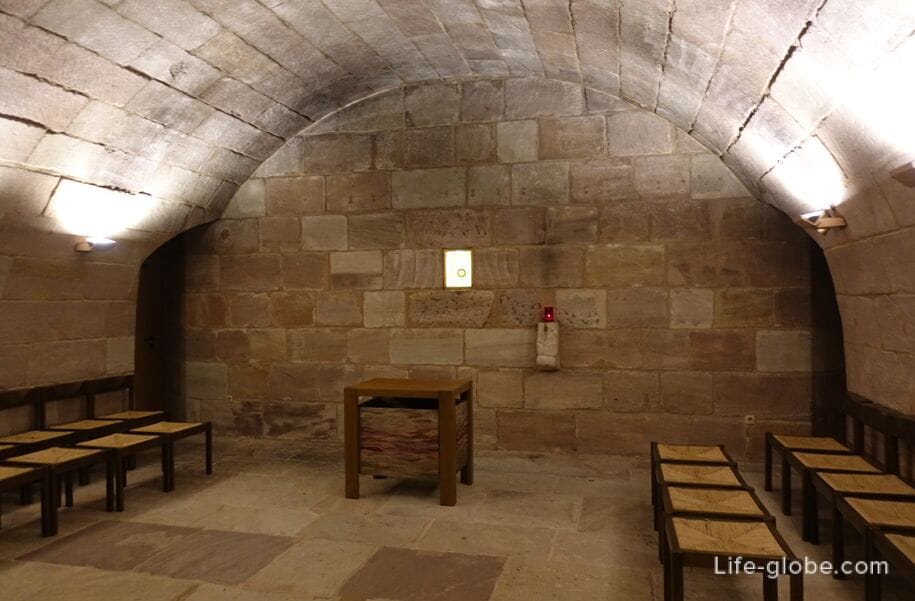

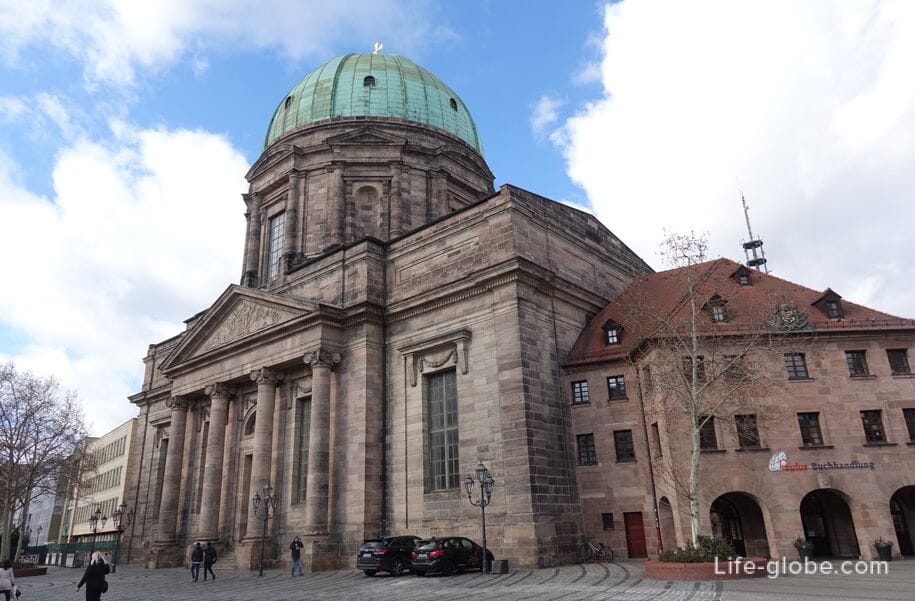
All accommodation facilities in Nuremberg, including in the old town and more remotely from it, can be viewed and booked here




